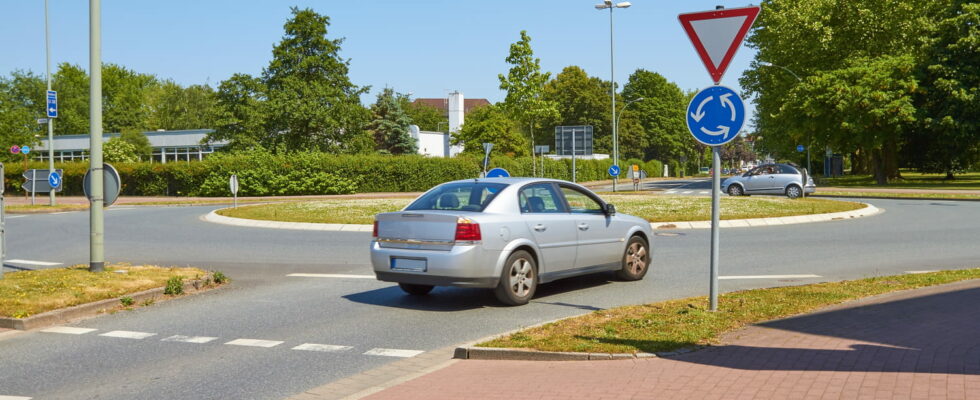Practical for making traffic easier and safer, roundabouts have replaced traditional crossroads on the roads of France. But they impose rules of conduct that few people respect.
Roundabouts are road improvements intended to improve traffic flow and reduce the risk of accidents inherent to intersections. Due to their circular shape, they force road users to slow down and avoid a direct crossing between several lanes. But although they have become very common on our roads, many drivers have difficulty handling them correctly, and often make two mistakes when driving on them.
First of all, it is necessary to distinguish roundabouts from roundabouts, because although they look very similar, their operating rules are very different. In a roundabout, the general rule of priority on the right applies, and users on the ring must therefore give way to those who want to enter. A roundabout, on the other hand, displays “Give way” signs at each entrance, which implies that users on the ring have priority, and that those who want to enter must stop.
In fact, roundabouts are much rarer than roundabouts in France. Thus, an unaccustomed and inattentive driver could give himself a real fright, in addition to causing an accident, by not stopping in the middle of the ring to give way to a vehicle wanting to enter. You must therefore be vigilant when approaching a circular intersection, and look carefully at the signage to identify the type of layout: in the absence of “Give way” signs at the entrances, it is a roundabout, and you will therefore have to be ready to stop on the ring to give priority to the right.
In either case, specific traffic rules apply, and this is where some drivers sometimes make mistakes, through ignorance or inattention. The most common is the absence or incorrect use of the turn signal. When entering the ring, if one intends to take one of the exits before half of the circleeither to the right or straight ahead, you should not put your left indicator on, And activate your right indicator only after having passed the exit before the one that interests us.
On the other hand, if we plan to take one of the exits located after half the circleeither to the left or to make a U-turn, you must then put your left indicator on as soon as you enter the ringThen put on your right indicator after having passed the exit preceding the one that interests us. Using your turn signals correctly allows you to warn other users of your path, and thus greatly limits the risk of collision between vehicles.
In the same way, the intended exit determines the placement to be adopted inside the roundabout or roundabout. If we aim one of the exits located on the first half of the circleso to go right or continue straight, you must circulate on the outer band of the ring. On the contrary, to borrow one of the exits from the second half of the circleeither to go left or to turn around, you must first position yourself on the inner band of the ringThen carefully fall back on the outer band, between the exit that interests us and the one preceding.
These two rules, namely the use of indicators and positioning on the lanes, both aim to avoid collisions between vehicles traveling on roundabouts or roundabouts. And as we see, their correct application relies on the choice of the exit intended by the motorist. Therefore, it is imperative to identify in advance the exit you wish to take, in order to adopt the right gestures and behavior.
And in the event of a mistake, you should definitely not act in haste and rather take your time, especially if you are on the inner ring. It is indeed better to make a complete turn, in order to signal and properly prepare for your exit, than to suddenly change lanes at the last moment. Because in addition to putting yourself and others in serious danger, you will always be considered 100% responsible by insurance companies in the event of a collision of this type when exiting a roundabout.
